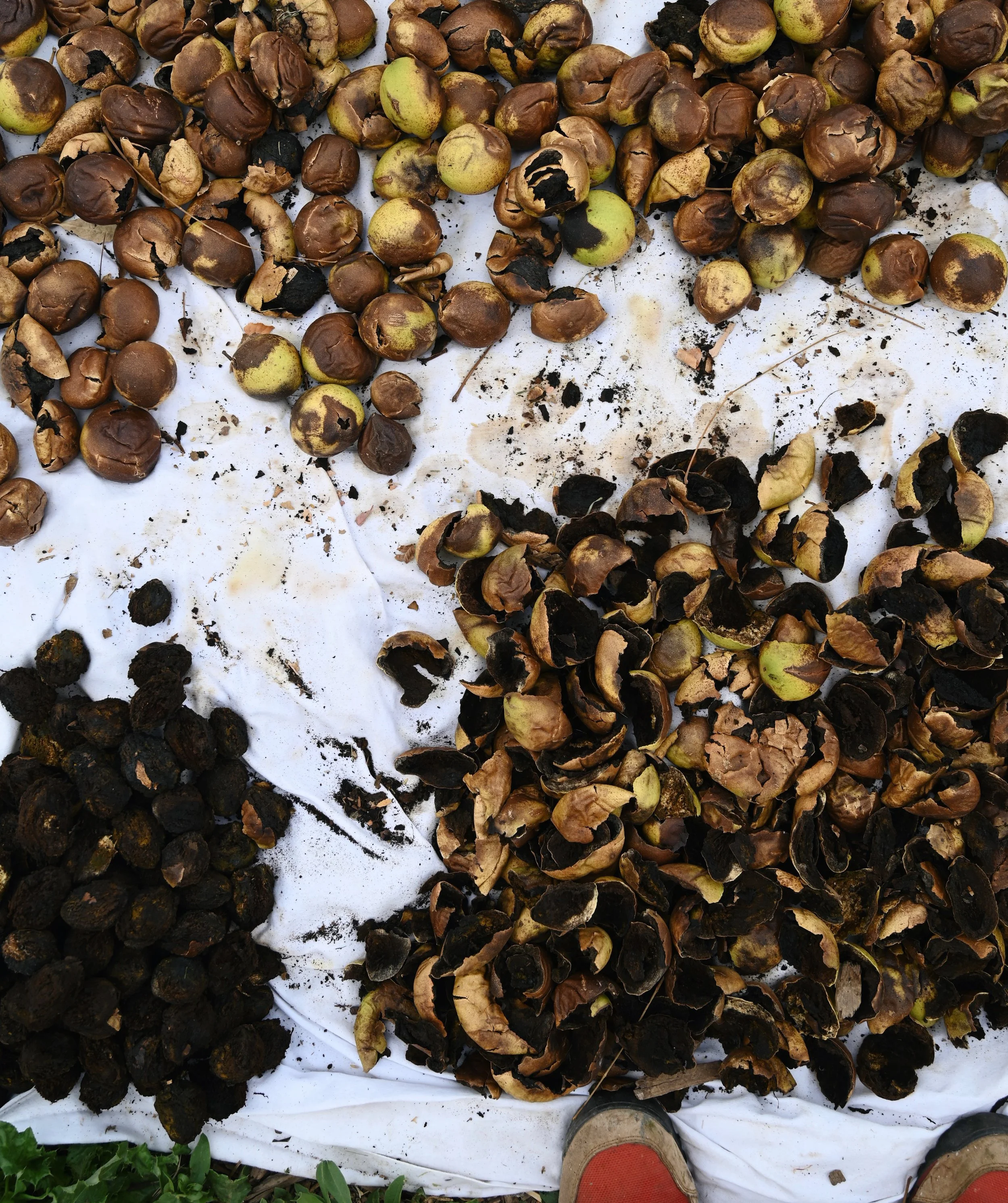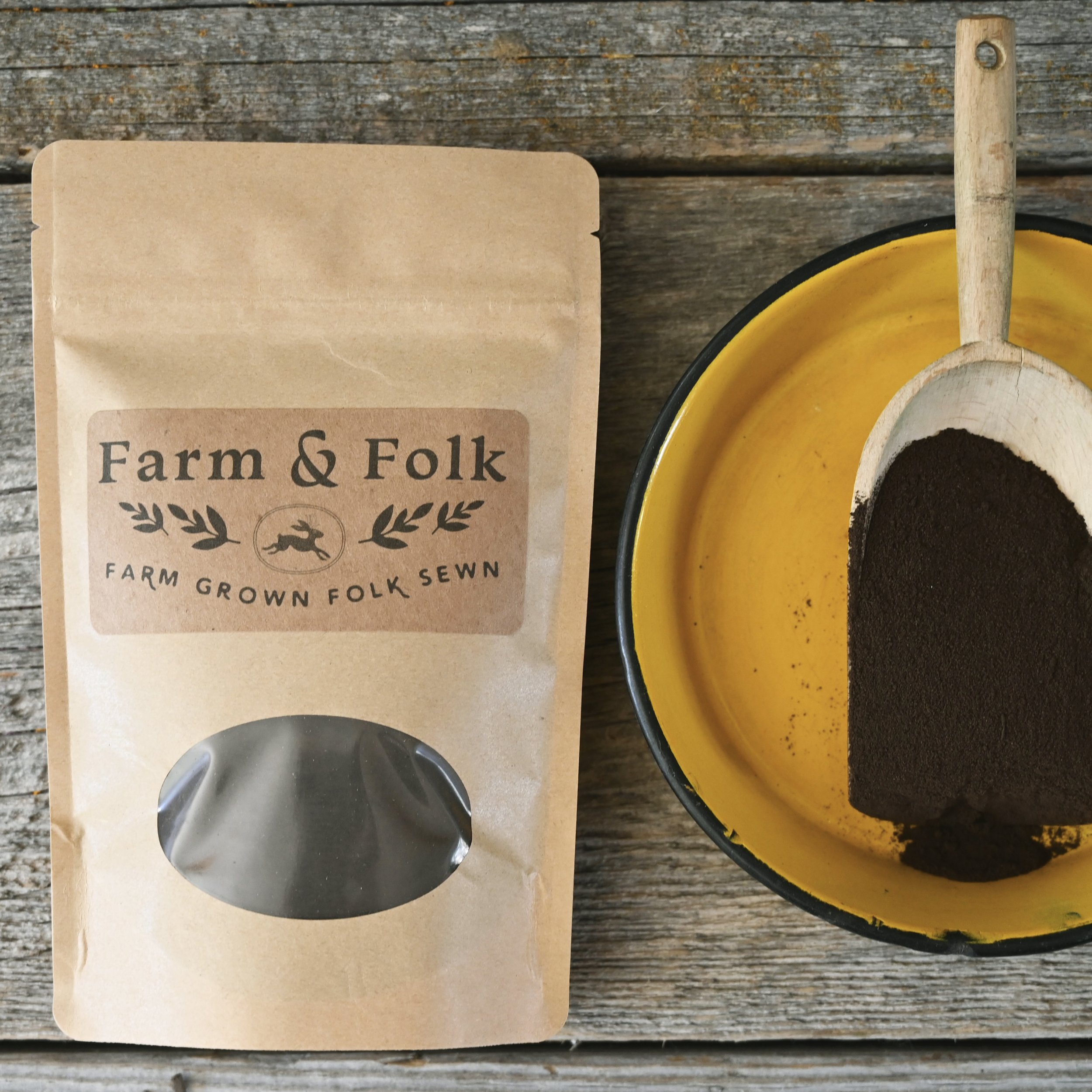Natural Dyeing with Black Walnut Husks
I don’t have a ton of experience naturally dyeing with black walnut husks but I’ve experimented with them here and there. Here in the West, Black Walnut trees are not very common at all. I didn’t even know they could grow here until my neighbor told me she had a tree dumping black walnuts all over her yard. A few days later she brought me a couple boxes of husks! Shortly after that I discovered a big tree downtown. When I realized this species could indeed grow in the West I ordered a couple saplings from Strictly Medicinal. Sadly they didn’t make it through the winter but I’ll try again.
Black walnuts have a soft husk encasing the inner hard shell. The hard inner shells can be used as a dye but it’s the outer husks that are most potent. I’ve heard that they’re most strong when you use them fresh but I was too busy at harvest season to try that, so I spread them out on an old sheet and dried them for later use. From there I ground them into a fine powder.
Above I’m working on removing the husks: whole nuts on the top, removed husks on the bottom right, and inner walnuts on the bottom left. I used a large pair of channel lock pliers to squeeze the husks off.
For this dye experiment I selected bleached linen cloth on the left and unbleached linen cloth on the right. I scoured the cloth, then soaked it in a black walnut husk tannin bath at 15% WOF for 4 hours. I set that tannin bath aside, then mordanted the cloth for 4 hours with alum and soda ash as explained in this post. I used my finely ground black walnut powder which you can see below. I have a few bags of this left in the shop. Fingers crossed I’ll be able to forage some more this fall.
After mordanting I rinsed the cloth once, then put it back into the reserved black walnut tannin bath. When I set up the tannin bath I only brought the temperature up to 120°F because high temperatures will damage tannin. Once mordanting is complete the results are permanent and high temperatures can by applied. I should mention that I didn’t add any additional walnut husk powder, I just slowly brought the leftover bath up to 180°F and held it there for an hour stirring every so often. Then I turned off the heat, made sure the fabric was fully submerged, and let it steep for several hours. By the end of the day I was happy with the colors so I rinsed the cloth just once and hung it on the line to dry.
After washing and drying these are the colors I achieved at 15% WOF: bleached linen on the left, unbleached linen in the center, and unbleached linen modified with ferrous sulfate at 3.5% WOF on the right. I was surprised by these results as I fully expected the unbleached linen to be a lot darker than the bleached linen. In the photo the piece modified with iron looks gray but is actually a warm smokey brown. The photo below is more accurate.
Be sure to check out my book Farm & Folk Quilt Alchemy for more extensive natural dye information. It’s available wherever books are sold and I have signed copies available here. Formula 12: Black Walnut Browns can be found on page 70.







